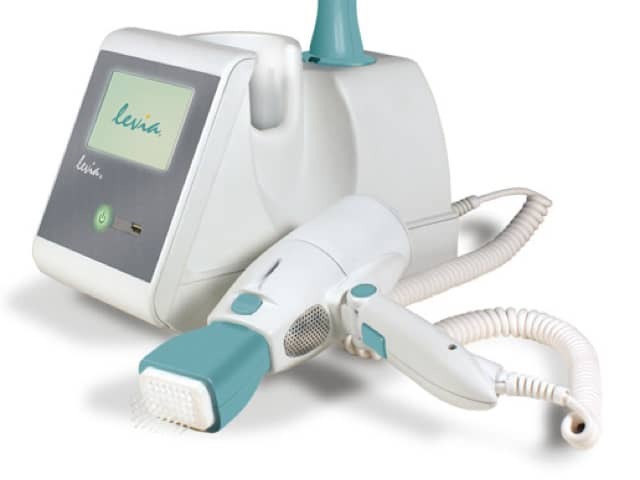Main menu
Common skin conditions

NEWS
Join DermNet PRO
Read more
Quick links
Phototherapy is the use of light or other forms of non-ionising electromagnetic radiation in treatment. The light or radiation is produced by a medical device commonly referred to as a phototherapy unit.
The most commonly used medical lamps in phototherapy units emit a narrow band of ultraviolet (UV) radiation, which reduces or eliminates various skin diseases, at least temporarily.
Home phototherapy is a relatively safe and effective non-drug option for the self-treatment of skin disorders in the privacy and convenience of a patient's home. Phototherapy should be controlled and supervised by an experienced physician. However, not all dermatologists agree to oversee home phototherapy because of the potential for adverse reactions.
Treatment can be delivered to the skin of the whole body or it can be precisely targeted to affected areas to minimise exposure of uninvolved skin.

Levia targeted system

Unregulated Chinese narrowband UVB device
Skin conditions treated by home phototherapy may include:
Home therapy is not suitable for all patients with these skin conditions and results vary.
Home phototherapy units range from hand-held and table-top devices for spot treatment of small areas of affected skin to cabinet or “walk-in” units for patients requiring full body treatment.
Well-known companies providing home phototherapy units include Daavlin, UVABiotek (Hudson Falls, NY, USA), Solarc Systems Inc (Ontario, Canada) and National Body Corp (Ohio, USA). These companies provide full-body wrap around and single panel systems, plus hand/foot units.
Unregulated home phototherapy devices are also marketed online. Their safety and efficacy are unknown.
Initially, treatments to clear plaque psoriasis are taken 3 to 5 times per week. Your doctor may recommend stopping treatment once the psoriasis is clear. Some patients will continue treatment less frequently during a maintenance regime. In a large 2024 study, home phototherapy demonstrated non-inferiority to clinic-based phototherapy for guttate and chronic plaque psoriasis, and was less of a burden to recipients due to convenience.
Treatments for vitiligo are usually taken twice per week, never on consecutive days because of the risk of burning the white skin. Treatment times are typically short.
Eczema and other less common skin diseases require physician guidance for treatment times and duration.
This depends on the skin condition.
In psoriasis, typically improvement is evident after about 10 treatments and it is uncommon to require more than 20-30 treatments to clear the skin. When the psoriasis recurs, your doctor may recommend another course of phototherapy. Phototherapy can be combined with topical and systemic medicines if required.
In vitiligo, effectiveness is assessed after 16 weeks or at least 30 treatments. If repigmentation is noted, it may be continued for many months but should be discontinued if progress slows.
Like any other FDA-regulated medication or procedure, USA regulations state that phototherapy light systems used to treat psoriasis, eczema, vitiligo or other light-responsive conditions may not be sold to or by anyone without a valid prescription from a doctor.
Home phototherapy is potentially hazardous, as UV radiation damages the skin and can cause serious burns (like sunburn). Excessive exposure to UV radiation may also lead to long-term skin ageing and skin cancer including melanoma, squamous cell carcinoma (SCC) and basal cell carcinoma (BCC).
Burning is more likely in fair-skinned people with Fitzpatrick skin types 1 and 2 compared to darker skinner people with Fitzpatrick skin types 4, 5 or 6. Burning is also more likely in people taking certain photosensitising medications including common antibiotics and anti-inflammatory medications. Tell your physician the names of all your prescribed and over-the-counter medicines before you start treatment, and check with your doctor if you start a new medication while undergoing home phototherapy.
Home therapy can be safe if dosing is carefully controlled. Side effects reported by one study included red skin (erythema, in 36%), blisters (1%), itch (8%), and dryness (1%).
Safety features in newer home phototherapy units include:
Such innovations make home phototherapy an appropriate option for many patients. Response to treatment and adverse events must be monitored carefully by your doctor.